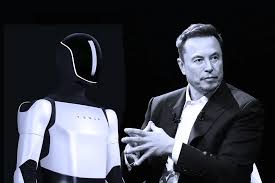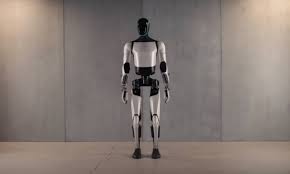Elon Musk Announces Plan to Bring Optimus Robot to Mars by 2029, Revolutionizing Space Exploration

Elon Musk Announces Plan to Bring Optimus Robot to Mars by 2029, Revolutionizing Space Exploration
Introduction: In yet another bold and visionary move, Elon Musk has unveiled plans to send his advanced humanoid robot, Optimus, to Mars by 2029, as part of his long-term vision to revolutionize space exploration and human life on the Red Planet. Musk, who has made headlines with his ambitious goals through companies like SpaceX, Tesla, and Neuralink, is now targeting one of the most challenging aspects of interplanetary exploration: human presence on Mars. With Optimus, Musk aims to provide an essential technological tool to assist astronauts, enhance research missions, and eventually pave the way for a fully sustainable human presence on Mars. In this article, we dive into Musk’s announcement, the capabilities of the Optimus robot, and the potential impact this project could have on space exploration.
The Vision Behind Optimus and Space Exploration: Elon Musk’s ultimate goal is to establish a self-sustaining human colony on Mars. He has been working toward this vision for years with his company SpaceX, which has successfully developed the Falcon 9 and Starship rockets. These innovations have significantly reduced the cost of space travel, bringing the dream of interplanetary colonization closer to reality. However, Musk understands that reaching Mars and sustaining human life on the planet presents massive challenges—challenges that Optimus could help solve.
Optimus is a humanoid robot developed by Tesla and is designed to perform a variety of tasks, from basic household chores to more complex operations that may be required on Mars. Musk’s plan to send Optimus to Mars by 2029 aims to leverage its capabilities to support astronauts during long-duration missions, assist in construction, and carry out critical tasks that would otherwise be too dangerous or difficult for humans to perform in the harsh Martian environment.
The robot is equipped with advanced AI, sensors, and mobility features, enabling it to interact with the environment and perform tasks autonomously. Musk believes that Optimus could serve as an essential companion for astronauts, assisting with tasks such as assembling habitats, conducting scientific experiments, and even performing maintenance on Mars-based infrastructure.
Why Optimus Is Key to the Mars Mission: One of the key challenges of establishing a human presence on Mars is the planet’s extreme conditions. With temperatures that can drop as low as -125°C (-195°F), a thin atmosphere, and frequent dust storms, Mars presents an inhospitable environment for humans. In order to create a self-sustaining colony, Musk has stressed the need for advanced technologies that can support astronauts and carry out tasks that may be too dangerous for humans.
Optimus is designed to solve some of these challenges. The robot is built with advanced dexterity and agility, allowing it to perform tasks that require human-like precision and flexibility. On Mars, where resources will be limited and the risk of human error is higher, Optimus can perform repetitive or physically demanding tasks, such as moving materials, assembling habitats, or conducting routine inspections of equipment. The robot’s ability to operate autonomously and carry out tasks without constant human supervision makes it an ideal candidate for missions where human presence will be limited or impractical.
Another major advantage of sending Optimus to Mars is its ability to interact with and assist astronauts. In the early stages of colonization, astronauts will face long-duration missions with limited communication with Earth. Having robots like Optimus on Mars will allow astronauts to have more reliable assistance on the ground, making tasks like setting up research stations, conducting experiments, or even building sustainable infrastructure more manageable. Musk envisions Optimus as a force multiplier for human explorers on Mars, improving the overall efficiency and safety of missions.
The Impact of Optimus on Human Exploration of Mars: Musk’s plan to bring Optimus to Mars by 2029 is a game-changer in terms of how humanity will explore and inhabit the Red Planet. The robot’s abilities go beyond mere assistance; Optimus could play a central role in enabling long-term sustainability on Mars. For example, the robot could help in the construction of habitats using locally sourced materials, participate in the production of energy through solar or nuclear systems, and even assist in growing food through agriculture technologies.
One of the key factors in making a Mars colony self-sustaining is the ability to produce oxygen and water. Optimus could play a crucial role in helping establish systems for water extraction and oxygen generation. By supporting these life-sustaining activities, the robot would become an essential part of the infrastructure needed for long-term survival on Mars.
Moreover, Optimus could facilitate scientific research on Mars. By taking on the role of an assistant, the robot could help conduct experiments, collect data, and explore areas that may be too dangerous for humans to access initially. Its AI capabilities could help process vast amounts of data and analyze the Martian environment, providing valuable insights into the planet’s geology, climate, and potential for habitability.
Musk’s vision for Optimus goes beyond just helping astronauts; it represents the next step in human-robot collaboration. In space exploration, robots have long been used for scientific instruments, but Optimus takes this idea to a new level by being a human-like presence that can perform tasks that are traditionally carried out by humans, all while operating in an extreme environment.
Challenges and Opportunities in the Mars Mission: While the idea of sending a humanoid robot like Optimus to Mars is undoubtedly exciting, there are significant challenges that will need to be overcome. One of the primary hurdles is ensuring that Optimus can function effectively in the harsh Martian environment. The robot will need to be equipped with advanced sensors, heat-resistant materials, and an adaptive AI system to navigate and survive in conditions where resources like energy and repair capabilities will be limited.
Additionally, the communication delay between Earth and Mars, which can range from 20 to 40 minutes depending on their relative positions, means that Optimus will need to be highly autonomous. Musk has emphasized the importance of creating robots that are capable of performing tasks independently, without requiring real-time input from Earth-based teams. This will be a critical aspect of Optimus’s design, as it will have to rely on pre-programmed algorithms and adapt to unforeseen challenges on Mars.
Another challenge is the cost and logistics of sending Optimus to Mars. Musk has made it clear that space travel must become significantly more affordable if humanity is to establish a permanent presence on Mars. SpaceX’s Starship is central to Musk’s vision, as it is designed to be fully reusable and capable of carrying large cargo, including humanoid robots like Optimus. Ensuring that Starship can deliver Optimus safely to Mars while remaining cost-effective will be one of the key milestones in making Musk’s plan a reality.
Conclusion: Elon Musk’s plan to bring Optimus to Mars by 2029 represents a bold leap forward in space exploration. By leveraging the advanced capabilities of humanoid robots, Musk aims to solve some of the most pressing challenges in creating a sustainable human presence on the Red Planet. Optimus could play a critical role in supporting astronauts, building infrastructure, conducting research, and ensuring long-term survival on Mars. As SpaceX continues to push the boundaries of space travel, the addition of Optimus to future missions will redefine how we approach space exploration. Musk’s visionary plan to send Optimus to Mars is not just about sending a robot to another planet—it’s about taking the next giant leap toward making humanity a multi-planetary species, with the help of groundbreaking technology.










